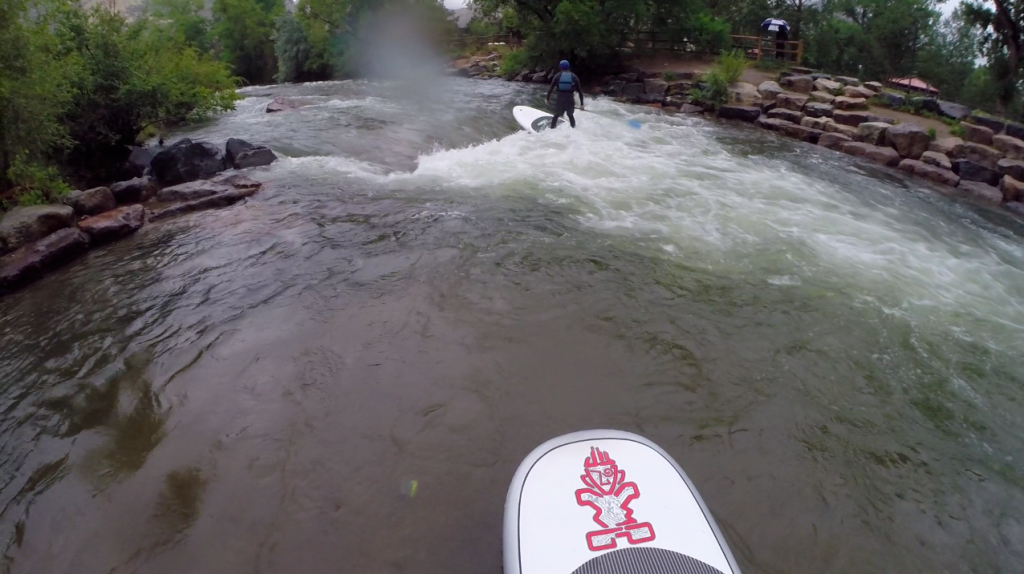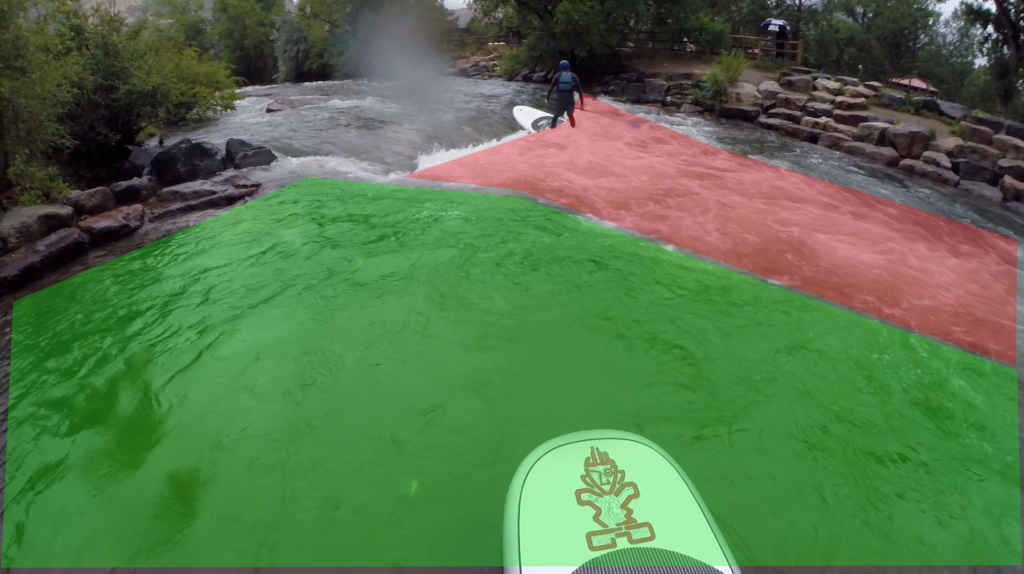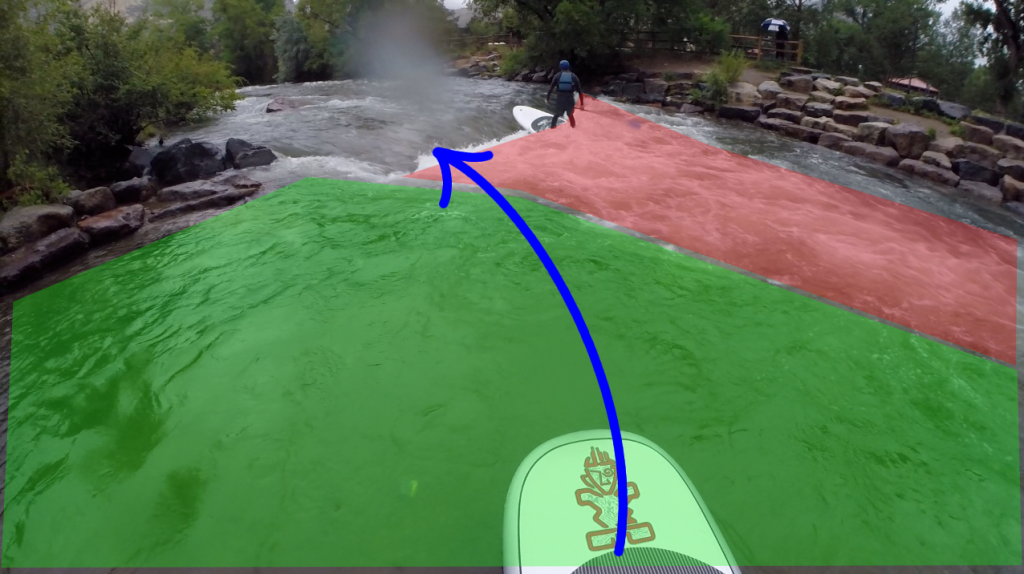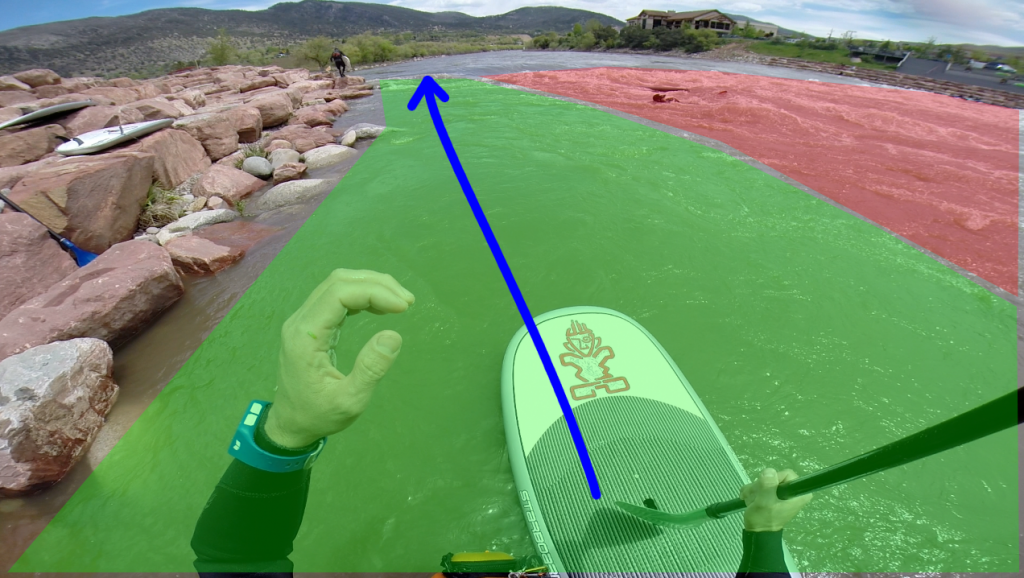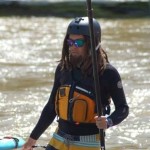This is the third post in a multi-post tutorial on how to get started SUP river surfing. Checkout the other posts as well:
- Part 1: The Gear
- Part 2: Scoping out the wave
- Part 3: Plotting a course onto the wave
- Part 4: Padding stances to catch the wave
- Part 5: Paddle strokes to catch the wave
- Part 6: Stances and footwork for surfing the wave
- Part 7: Paddle strokes and braces for surfing the wave
Now that you’ve got all the gear and found a wave, you’re ready to start surfing! In this post I’ll start talking about how to paddle onto a river wave. In particular, we’ll look at the best path to get onto the wave.
In the last post I talked about finding a wave with a good eddy. In this post I’ll talk about using the upstream flow of the eddy to propel yourself onto the wave. First let’s review how to find the eddy. Here’s a photo of a wave in Golden, CO taken while I was standing in the eddy:
The eddy is the calm water I am standing in. In this next photo I’ve highlighted to fast moving, main flow of water in red, and the eddy in green. The boundary between the eddy and the fast moving water (where the highlighting changes from red to green) is called the eddy line.
In order to easily paddle onto the wave, you need to stay in the eddy (the green section) as long as possible. This will allow you to gain enough speed to cross the eddy line, paddle over the white water and onto the face of the wave. If you don’t get enough speed, you’ll get pushed down stream before reaching the face of the wave or the eddy line will spin your board around once you attempt to cross it. Here’s the path I will paddle onto this wave:
As you can see I’m staying in the eddy almost the entire time. I only paddle into the faster moving water at the last moment so I can build plenty of momentum while in the calm eddy. In general you can accomplish this by paddling onto the wave on the far left or right sides. Here’s a video of me paddling onto this wave:
You’ll notice that I get onto the wave on the far left, then I move to the center of the wave. Most waves will be easiest to surf while in the middle. Once you get onto the face of the wave, try to move towards the center. I’ll talk more about how to move around on the wave in a later post.
Here’s another example from Glenwood. The fast moving water is highlighted in red, the eddy in green, and my path in blue.
In this case, I’m starting from much further back in the eddy. I’ve found that having at least enough distance to make three paddle strokes while still in the eddy is ideal. This will give you enough time to generate some speed, as well as give you time to get your stance and balance adjusted before getting onto the wave. Here’s the video of me catching the Glenwood wave:
Learning to catch river waves on a SUP is a learning process that will (most likely) never end. Each wave is different, and each wave will change as the river flow goes up or down. Every time I go surf, I find I spend the first hour of my session learning and dialing in the wave for that day. Try not get frustrated, and do your best to learn from your failed attempts.
The key thing to remember from this post is to use the eddy to your advantage. Paddle through the eddy as long as possible before committing to the wave. As fellow river surfer Britney Parker says: “A river surfer’s best friend is eddy.”
Click here to read Part 4: paddling stances to catch the wave.

